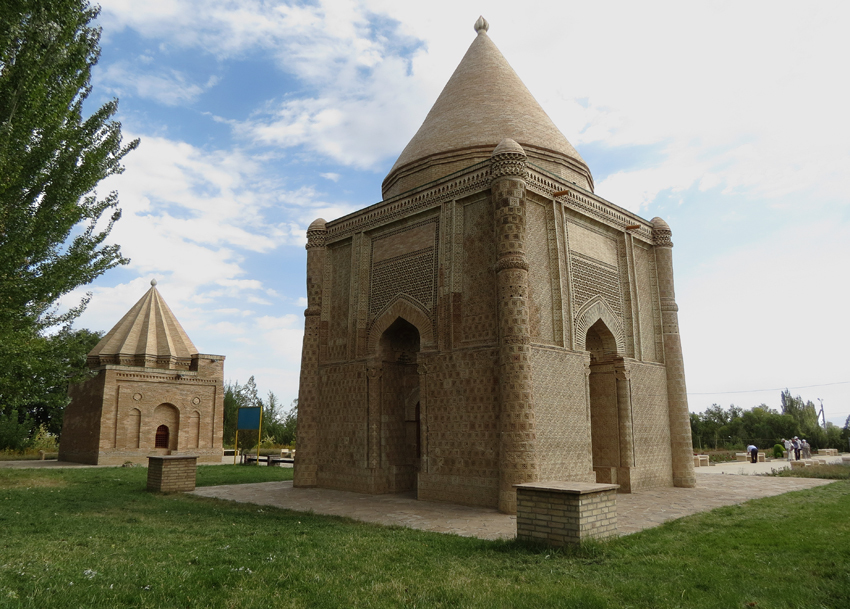ASTANA – Turkestan, an ancient city in southern Kazakhstan near the Syr Darya River, boasts more than 1,500 years of rich history and numerous cultural and sacred sites preserved to this day.
Located approximately 862 kilometres from Almaty and 168 kilometres from Shymkent, Turkestan is a great destination to immerse in the authentic and vibrant culture of medieval Central Asia with beautiful architectural complexes, noisy bazaars and vast steppes.
The northern part of the Silk Road once passed through Turkestan and the other ancient cities of the area such as Otyrar, Sairam, Sauran and Syganak. Linking east and west, they were major centres of trade, culture and knowledge.
In the 16th century, Kazakh khans (rulers) chose Turkestan as the capital of the Kazakh Khanate, leveraging on the city’s significant symbolic meaning in the region.
Officials recently reported more than one million people visited the city last year, many travelling to sacred places spanning the entire southern part of Kazakhstan.
For many tourists, their trip to Turkestan starts at the mausoleum of Khoja Ahmed Yassawi dating to the 15th and 16th centuries. Built in the late 14th century by a decree of Timur (Tamerlane), once a powerful ruler of Central Asia, the mausoleum is considered a masterpiece of medieval architecture. Prominent Kazakh leaders such as Abulkhair Khan, Abylai Khan and Yessim Khan, as well as Kazakh judge Kazbek-bi, one the three key judges of the Kazakh Khanate, are buried inside the mausoleum.
The architectural complex is revered among Muslim pilgrims throughout Central Asia, as many seek to commemorate Yassawi, an influential Turkic Muslim religious scholar and mystic who founded the Yassawiya order of Sufis.
Timur died before the mausoleum was completed and it has remained in its original state. In 2004, it was included on the United Nations Educational, Scientific and Cultural Organisation (UNESCO) world cultural heritage list. An ancient mosque, library and canteen are situated close to the complex.
Capital resident Meiramgul Beisenova believes the mausoleum is a “pearl of Turkestan.” She travelled to the city several years ago, noting it embraced both Kazakh and Uzbek motifs due to its proximity to the border.
Arystan Bab mausoleum, devoted to Yassawi’s teacher, is also worth a visit. Many pilgrims believe the stop there should be made before visiting Yassawi’s mausoleum as a tribute to the scholar’s tutor.
Aisha Bibi mausoleum, dating to the 12th century, is also a popular destination among tourists, including pilgrims. She was the daughter of Muslim saint Zengi Baba and Anvar Begim and as many as 28 versions circulate of the legend surrounding her life. The most popular one tells a tragic love story of young Karakhan Muhammad, ruler of the ancient city of Taraz, who fell in love with her.
After her father prohibited her from meeting the young man, Aisha and her babysitter Babaji Khatun, whose mausoleum is close to Aisha Bibi mausoleum, escaped the house at night. On their way to Taraz, a reptile killed the girl on the shore of the Asa River. Mourning his beloved one, Muhammad buried her on the hill and gathered masters to build a mausoleum on her grave.
The mausoleum represents a beautiful complex, as it is decorated with unique carved terracotta tiles that, unlike other ancient buildings, were not glued to the bricks.
The tomb of Gaukhar Ana, Yassawi’s daughter, is also considered a sacred place and one of the oldest monuments in Turkestan dating to the 12th-14th centuries. Legends say she was a healer and as she was unable to have children, became mother to all she treated. Her name means Mother Gaukhar.
The original grave was destroyed and a new building for pilgrims constructed in 1990.
The Turkestan railway station is also part of Kazakh history. It was built in 1903 during construction of the southern branch of a famous Orenburg-Tashkent Railroad.
Those willing to visit Turkestan and the southern part of the country should be aware of high summer temperatures. Visits are recommended in spring or fall.
In June, President Nursultan Nazarbayev signed a decree making Turkestan the regional centre of the newly renamed Turkestan Region (previously, South Kazakhstan), and designating Shymkent, a city of one million people and long-time regional centre, the city of national significance, on a par with Astana and Almaty.
Getting there
Travelling by air will be the fastest and probably most comfortable option. The nearest airport is in Shymkent, where flights are operated frequently from other Kazakh regions and big cities, including Almaty and the capital. Taxis, busses and trains depart hourly to Turkestan.
The train is a cheaper option, but the ride is longer. The journey from Astana to Turkestan takes approximately 27 hours. The bus between the cities, though less comfortable, is another option.






